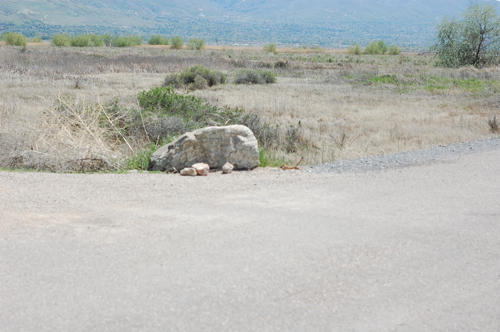 Yesterday I had some time to kill before my flight back to Minneapolis from Utah. I stopped for a wee bit at the Great Salt Lake Nature Center in Farmington to enjoy a final few moments of yellow-headed blackbirds. As I walked down the gravel road, I noticed a mammal hopping across the path. I didn't quite recognize the long shape and assumed it to be some sort of ground squirrel. However, I saw the animal zip across the road again and this time instantly recognized it as a weasel.
Yesterday I had some time to kill before my flight back to Minneapolis from Utah. I stopped for a wee bit at the Great Salt Lake Nature Center in Farmington to enjoy a final few moments of yellow-headed blackbirds. As I walked down the gravel road, I noticed a mammal hopping across the path. I didn't quite recognize the long shape and assumed it to be some sort of ground squirrel. However, I saw the animal zip across the road again and this time instantly recognized it as a weasel.
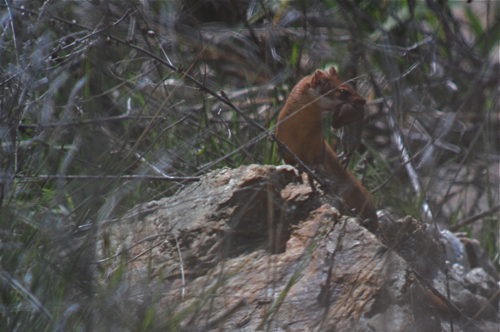
The weasel paused for a moment on a rock through some reeds and got a really craptastic photo but was excited because it looked as though the weasel had some prey in its mouth--how awesome is that? It paused long enough for me to get this shot then disappeared into the vegetation.
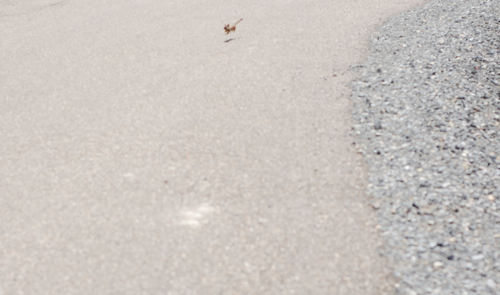
But a few seconds later, I was surprised to see the weasel come out on the road and it started to hop along in my direction. I'm not sure if "hop" is the right word for weasel travel. It looks more like the critter's body is part of a Slinky curving up and down.
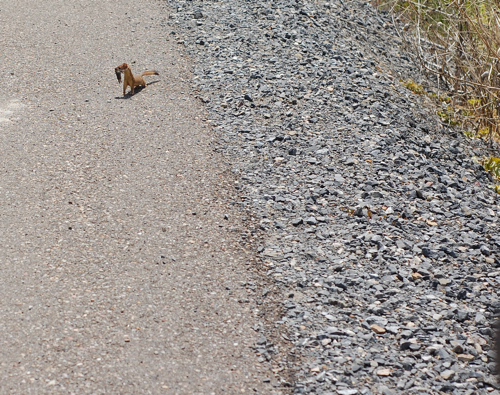
The weasel paused, it was far too close for me to digiscope so I took photos with the camera old school.
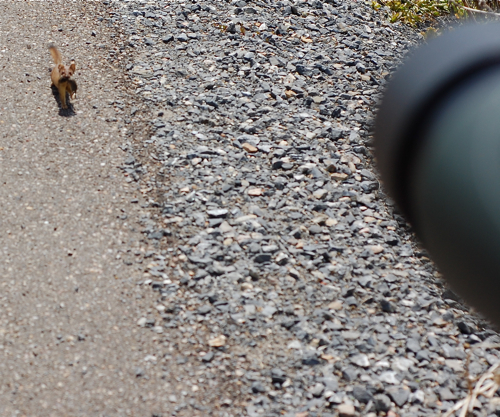
And the weasel just kept coming closer! I tried to get my scope into the shot to show how close the mammal was to me. I was perplexed and mildly concerned that it was coming so close--actually heading right for me. I wasn't flailing my arms, I stood still, but it would have heard my camera clicks and that should have been enough to want to give a human a wide berth. Weasels are carnivores and are known to go for prey larger than they are, but as short as I am, I doubt a weasel would consider me prey worthy (a mountain lion would, but surely not a little weasel).
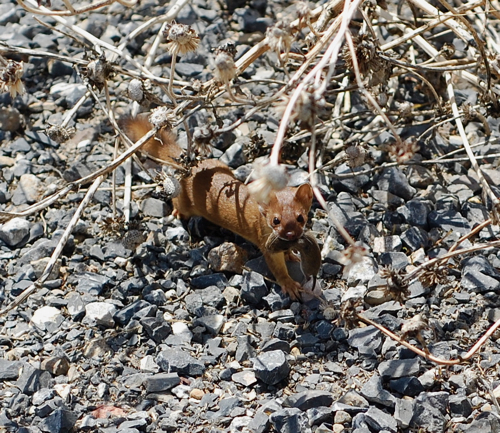
Then the weasel bounded up next to my right side, it wasn't even a foot away from my shoes and paused. It suddenly dawned on me that I had just seen the weasel moments ago running back and forth on this trek with something in its mouth. I know they are formidable predators and that they have an instinct to kill food when it's abundant and store if for later, but still--getting several small mice at once? Perhaps this weasel was not carrying prey, perhaps this was a female transferring her young from one den to another? I've read that weasels will move their den location and transfer the young if it is disturbed.
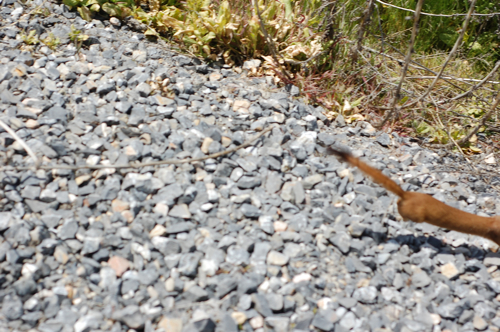
And then she dashed past me. Based on the length of her tail, I wondered if she was a long-tailed weasel or an ermine. Consulting my Peterson Mammals of North America revealed that in Utah, she would be a long-tailed weasel.

After she made it past me, she booked it to the other side of the road and down into a shrub. After sixty seconds, she reappeared and bounded past me again. She must have had another kit to retrieve from the old den. I tried to set myself up to see if I could get shots of her through my scope on her return.
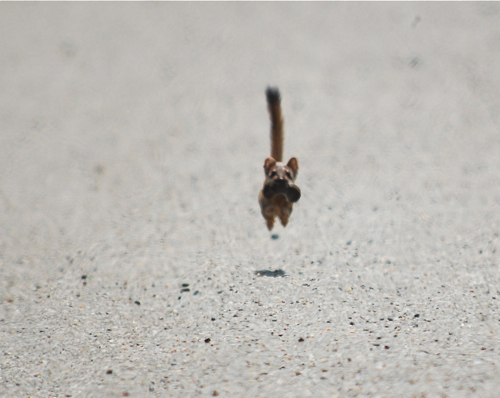
Check it out, it's hover weasel! Sure enough, she returned with another kit in her mouth and bounded right for me. Note how her long tail sticks straight up has she runs.
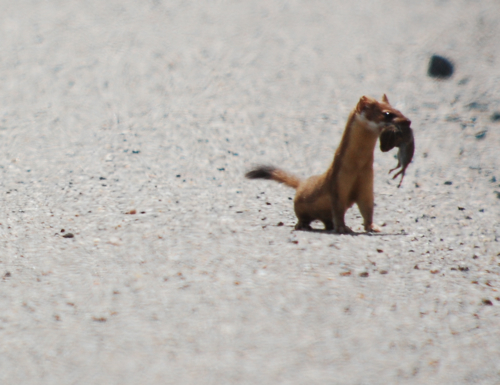
With my scope pointed at her this time, rather than just my camera, she stopped much further away to assess the situation. Since weasels are a top predator (for their size), they know that being stared at is not a good sign. If they stare at something, they are generally trying to determine how they can kill it and eat it. Having an 80mm objective lens pointed right at a her probably made her a bit more hesitant to run past me with one of her young in her mouth.
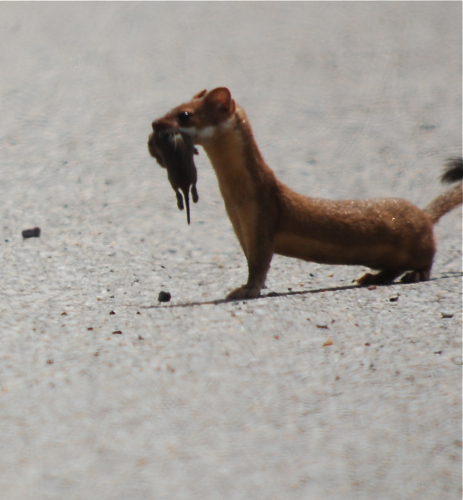
This time, she crossed the street--look at the tiny toes and skinny tail of her offspring--cute!
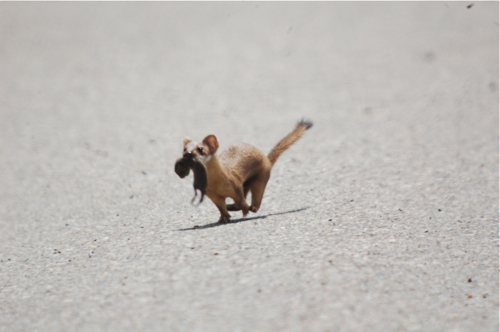
She continued on her journey and I continued down the trail. Who knows how many more young she had to transfer. Weasels can have 4 - 8 kits so if she had a large nest, she had her work cut out for her and didn't need me to distract her from the task at hand (or paw in her case). This was a new mammal for me. I've seen ermine, least weasel and mink, but this is my first long-tailed weasel.
